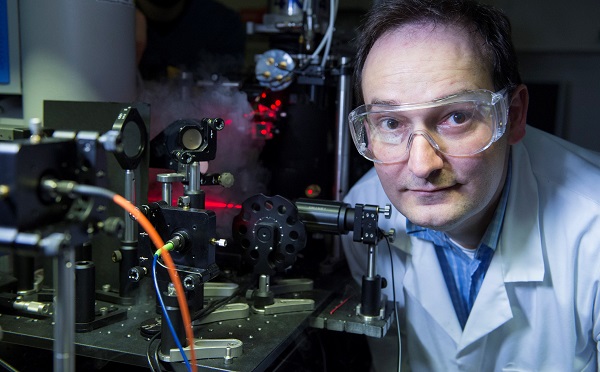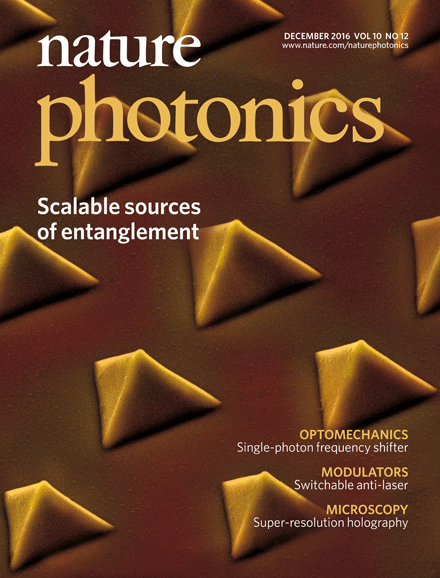 |
|
Dr Emanuele Pelucchi, Head of Epitaxy and Physics of Nanostructures and a member of the Science Foundation Ireland-funded Irish Photonic Integration Centre (IPIC) at Tyndall National Institute in Cork. (Photo courtesy of Tyndall National Institute)
|
Quantum computing is heralded as the next revolution in terms of global computing. Google, Intel and IBM are just some of the big names investing millions currently in the field of quantum computing which will enable faster, more efficient computing required to power the requirements of our future computing needs.
Now a researcher and his team at Tyndall National Institute in Cork have made a ‘quantum leap’ by developing a technical step that could enable the use of quantum computers sooner than expected.

|
|
Cover of nature photonics. (Image courtesy of Tung-Hsun Chung, Tyndall National Institute, University College Cork. Cover Design: Bethany Vukomanovic) |
Conventional digital computing uses ‘on-off’ switches, but quantum computing looks to harness quantum state of matters - such as entangled photons of light or multiple states of atoms - to encode information. In theory, this can lead to much faster and more powerful computer processing, but the technology to underpin quantum computing is currently difficult to develop at scale.
Researchers at Tyndall have taken a step forward by making quantum dot light-emitting diodes (LEDs) that can produce entangled photons (whose actions are linked), theoretically enabling their use to encode information in quantum computing.
This is not the first time that LEDs have been made that can produce entangled photons, but the methods and materials described in the new paper have important implications for the future of quantum technologies, explains researcher Dr Emanuele Pelucchi, Head of Epitaxy and Physics of Nanostructures and a member of the Science Foundation Ireland-funded Irish Photonic Integration Centre (IPIC) at Tyndall National Institute in Cork.
“The new development here is that we have engineered a scalable array of electrically driven quantum dots using easily-sourced materials and conventional semiconductor fabrication technologies, and our method allows you to direct the position of these sources of entangled photons,” he says.
“Being able to control the positions of the quantum dots and to build them at scale are key factors to underpin more widespread use of quantum computing technologies as they develop.”
The Tyndall technology uses nanotechnology to electrify arrays of the pyramid-shaped quantum dots so they produce entangled photons. “We exploit intrinsic nanoscale properties of the whole “pyramidal” structure, in particular, an engineered self-assembled vertical quantum wire, which selectively injects current into the vicinity of a quantum dot,” explains Dr Pelucchi.
“The reported results are an important step towards the realisation of integrated quantum photonic circuits designed for quantum information processing tasks, where thousands or more sources would function in unison.”
"It is exciting to see how research at Tyndall continues to break new ground, particularly in relation to this development in quantum computing. The significant breakthrough by Dr Pelucchi advances our understanding of how to harness the opportunity and power of quantum computing and undoubtedly accelerates progress in this field internationally. Photonics innovations by the IPIC team at Tyndall are being commercialised across a number sectors and as a result, we are directly driving global innovation through our investment, talent and research in this area," said Dr Kieran Drain, CEO at Tyndall National Institute.
'Selective carrier injection into patterned arrays of pyramidal quantum dots for entangled photon light-emitting diodes' (10.1038/nphoton.2016.203) was published online by Nature Photonics on 31 October 2016.













